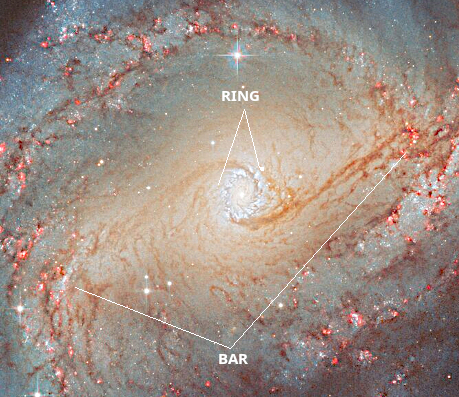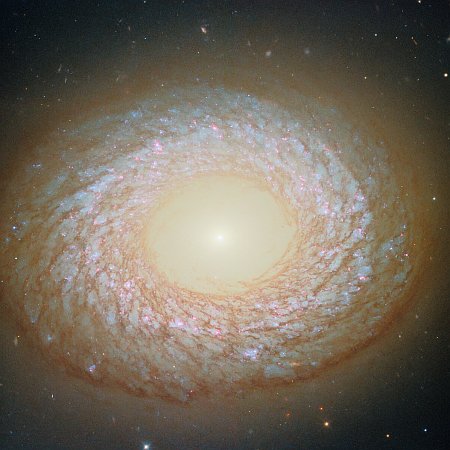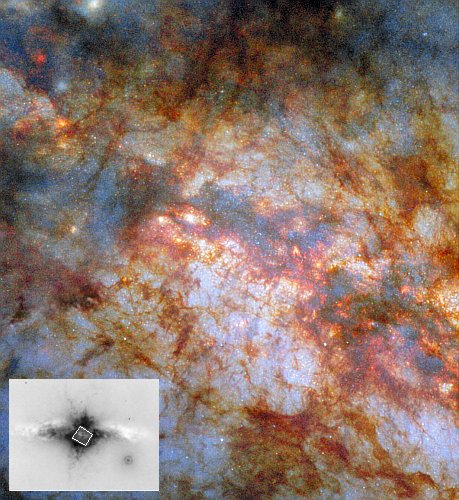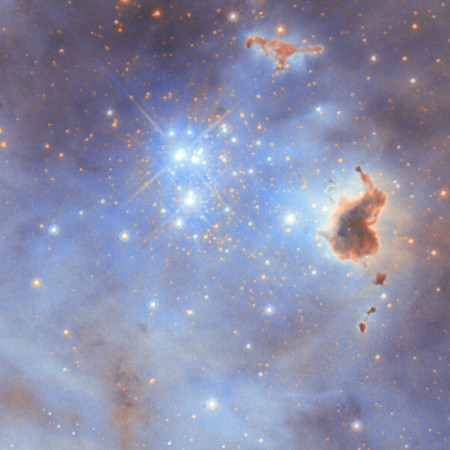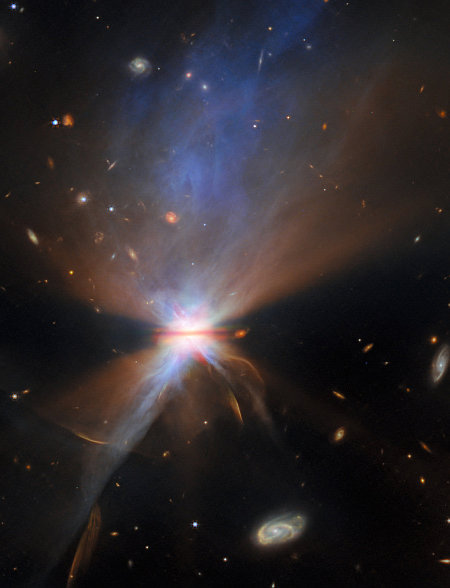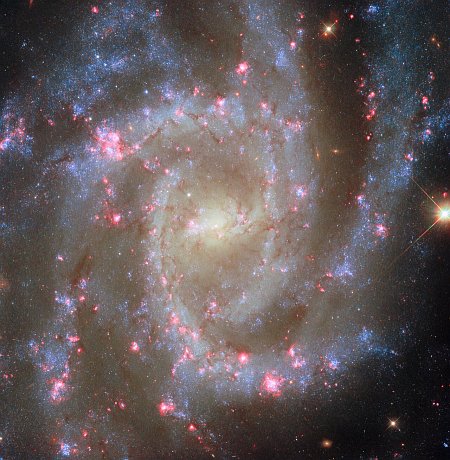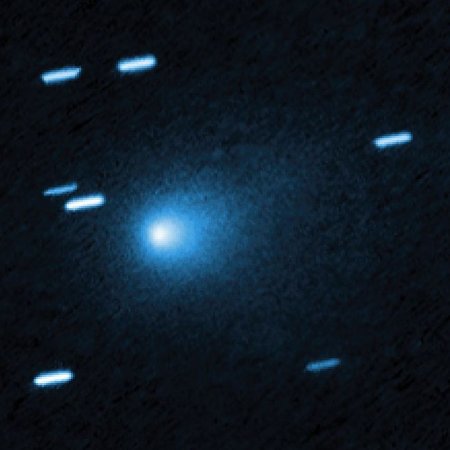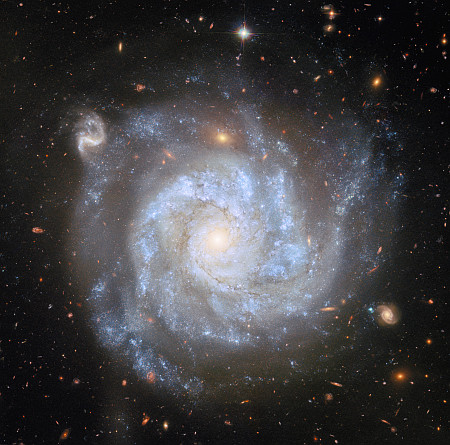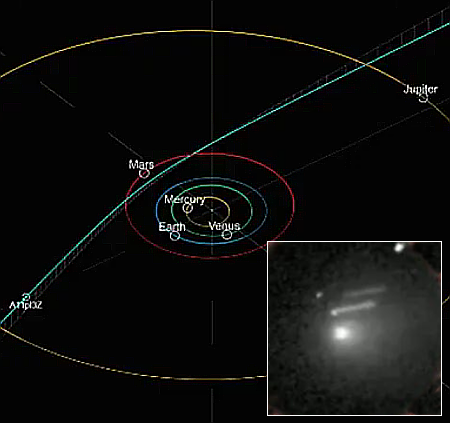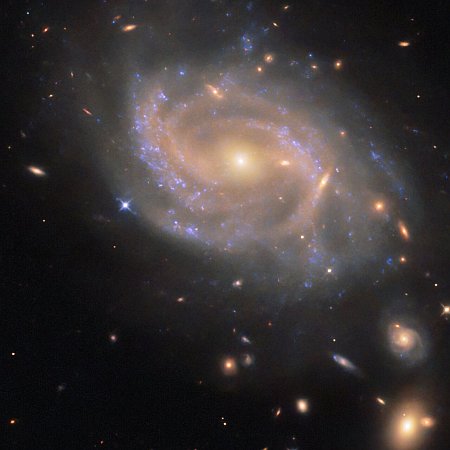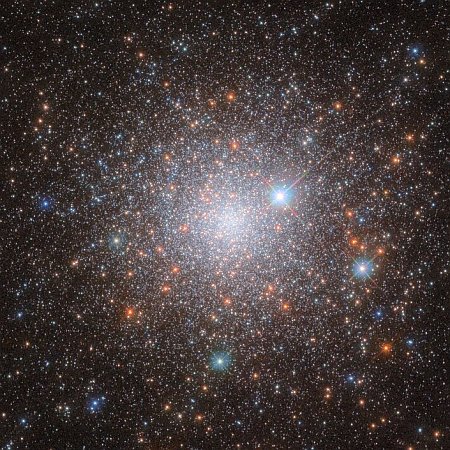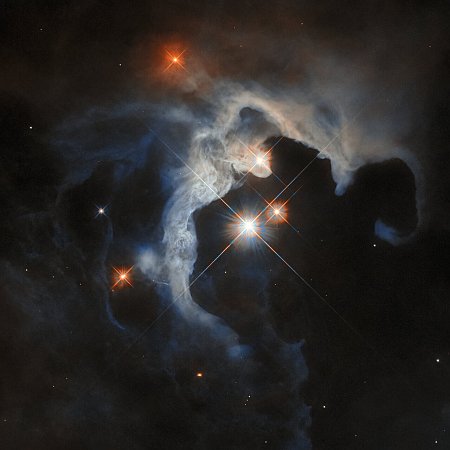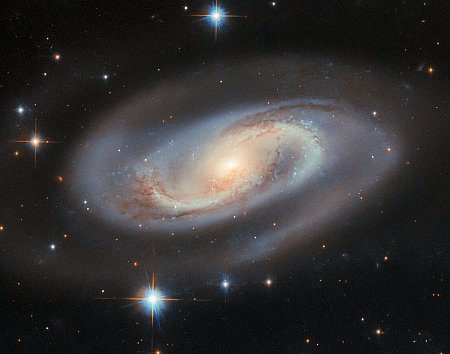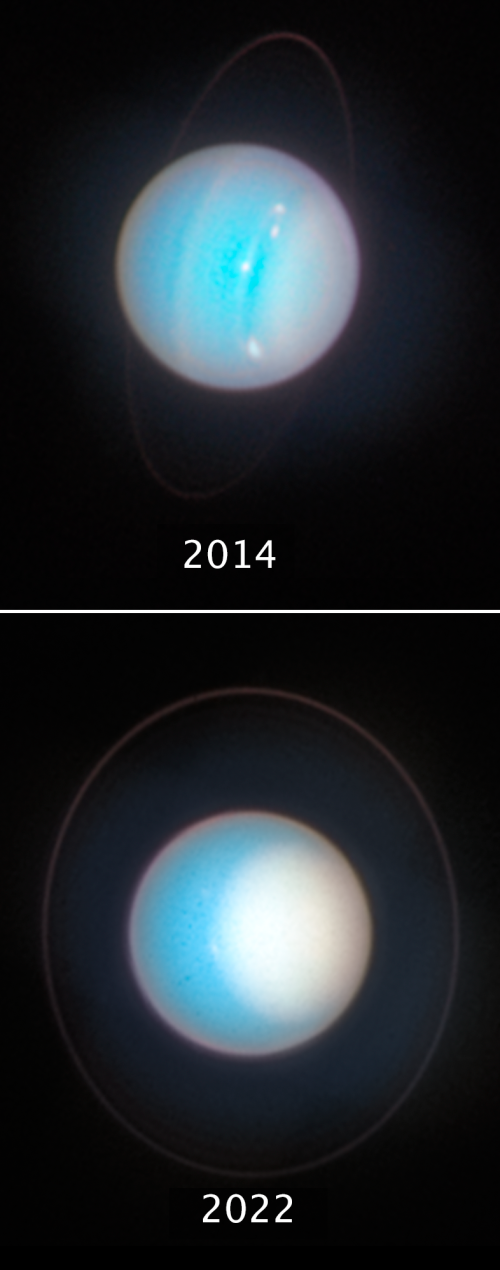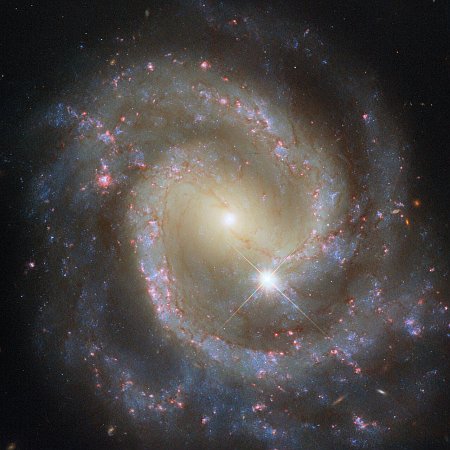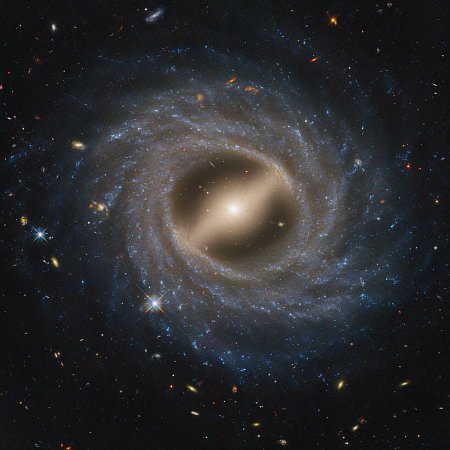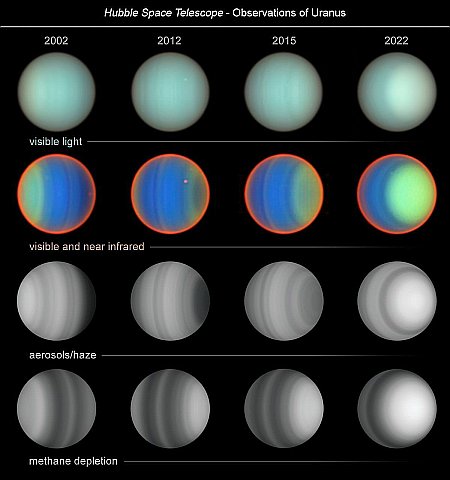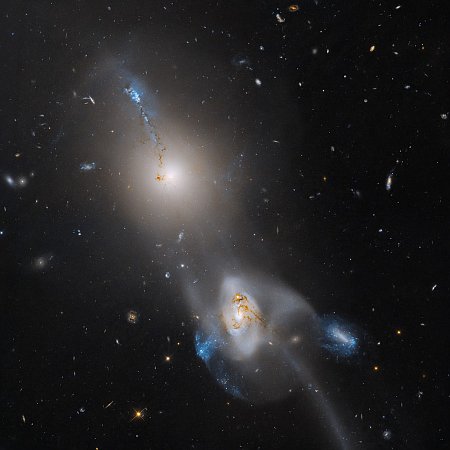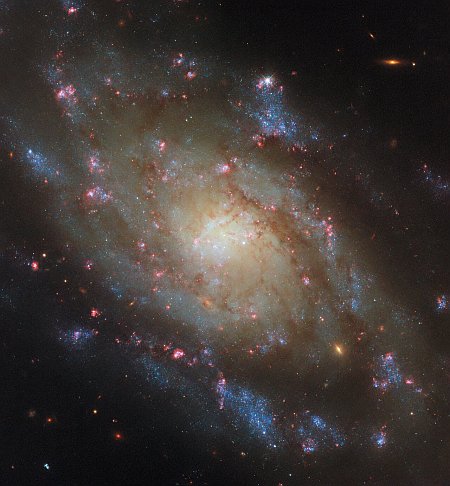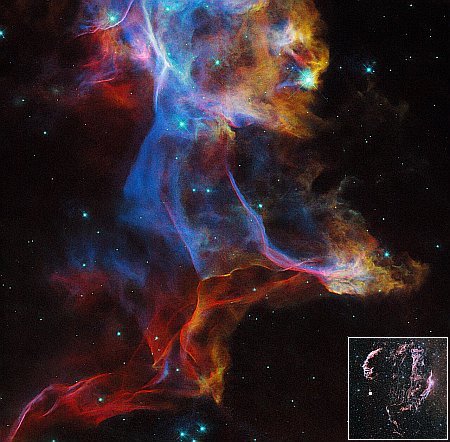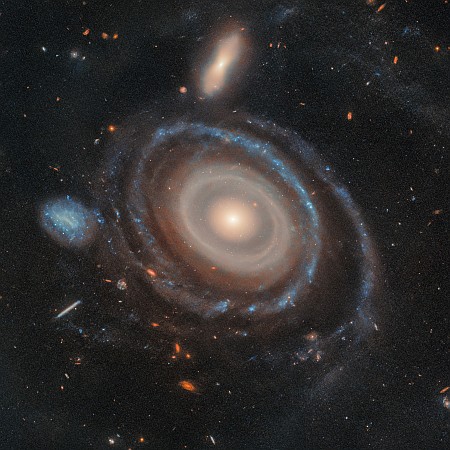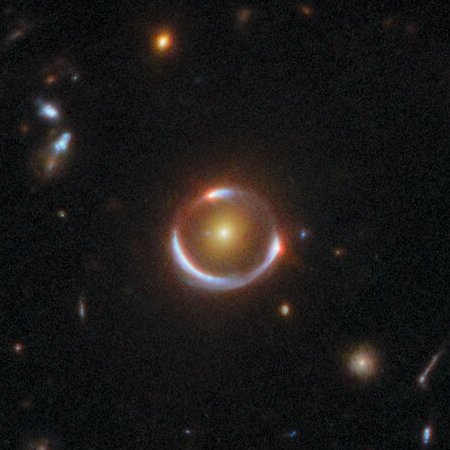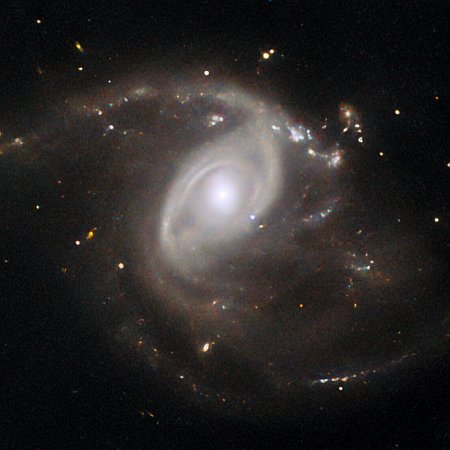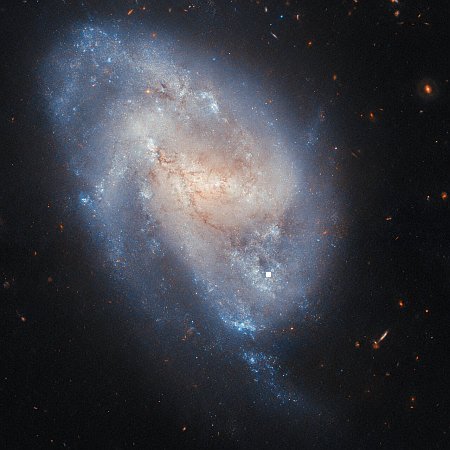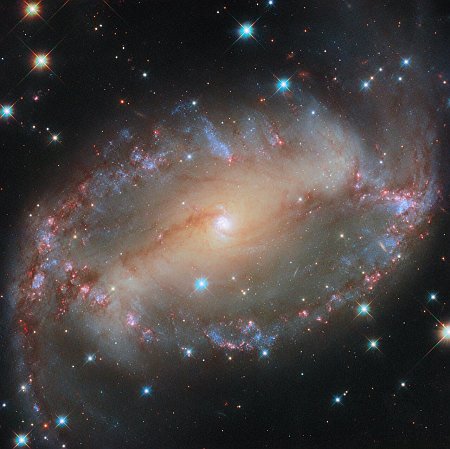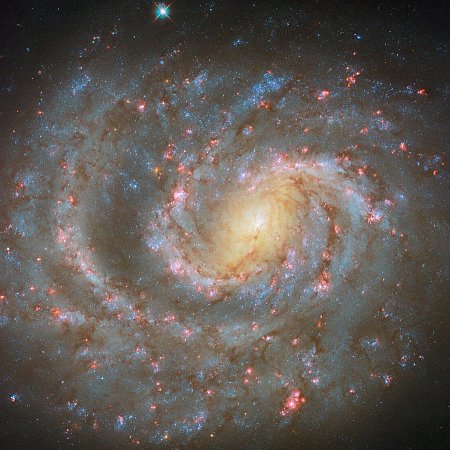A galaxy with a starburst ring within its nucleus
Cool image time! The picture to the right, cropped, reduced, sharpened, and annotated to post here, was released today by the science team of the Hubble Space Telescope as the picture of the week. This crop focuses on the central regions of this barred spiral galaxy, about 70 million light years away, with an unusual extra feature, a starburst ring encircling its nucleus. From the caption:
NGC 6951’s bar may be responsible for another remarkable feature: a white-blue ring that encloses the very heart of the galaxy. This is called a circumnuclear starburst ring — essentially, a circle of enhanced star formation around the nucleus of a galaxy. The bar funnels gas toward the centre of the galaxy, where it collects in a ring about 3800 light-years across. Two dark dust lanes that run parallel to the bar mark the points where gas from the bar enters the ring.
The dense gas of a circumnuclear starburst ring is the perfect environment to churn out an impressive number of stars. Using data from Hubble, astronomers have identified more than 80 potential star clusters within NGC 6951’s ring. Many of the stars formed less than 100 million years ago, but the ring itself is longer-lived, potentially having existed for 1–1.5 billion years.
This galaxy has also seen about a half dozen supernova, which raises the question: Does intense star formation trigger more supernovae? That is a question that can’t be answered with the data presently available.
Cool image time! The picture to the right, cropped, reduced, sharpened, and annotated to post here, was released today by the science team of the Hubble Space Telescope as the picture of the week. This crop focuses on the central regions of this barred spiral galaxy, about 70 million light years away, with an unusual extra feature, a starburst ring encircling its nucleus. From the caption:
NGC 6951’s bar may be responsible for another remarkable feature: a white-blue ring that encloses the very heart of the galaxy. This is called a circumnuclear starburst ring — essentially, a circle of enhanced star formation around the nucleus of a galaxy. The bar funnels gas toward the centre of the galaxy, where it collects in a ring about 3800 light-years across. Two dark dust lanes that run parallel to the bar mark the points where gas from the bar enters the ring.
The dense gas of a circumnuclear starburst ring is the perfect environment to churn out an impressive number of stars. Using data from Hubble, astronomers have identified more than 80 potential star clusters within NGC 6951’s ring. Many of the stars formed less than 100 million years ago, but the ring itself is longer-lived, potentially having existed for 1–1.5 billion years.
This galaxy has also seen about a half dozen supernova, which raises the question: Does intense star formation trigger more supernovae? That is a question that can’t be answered with the data presently available.

